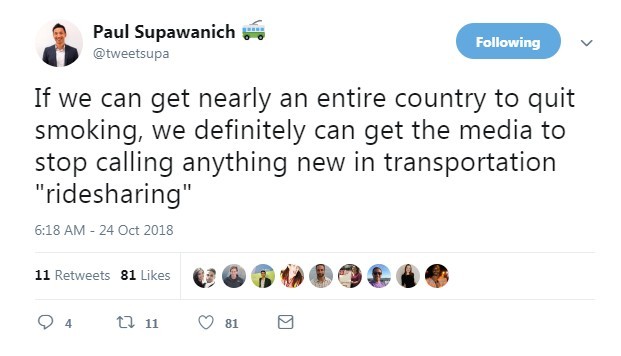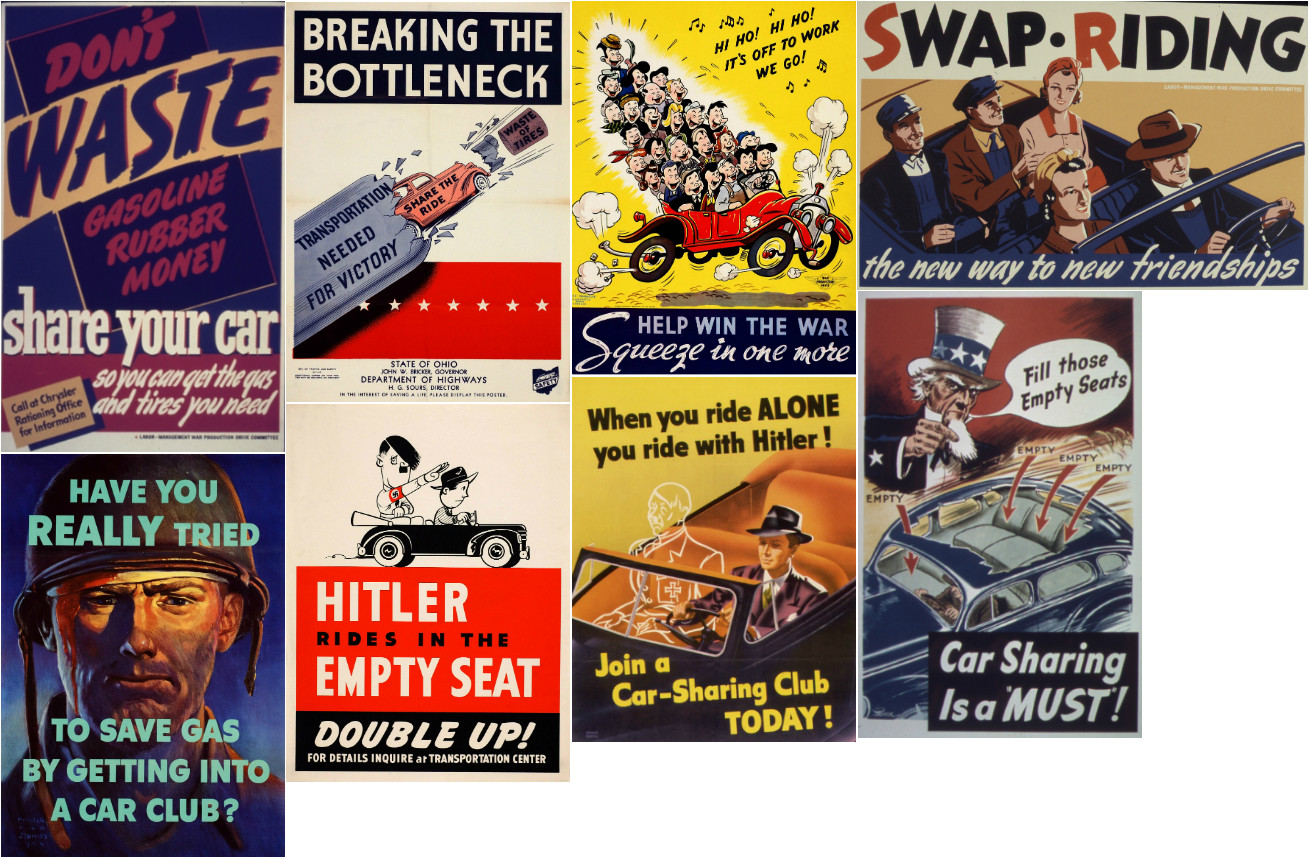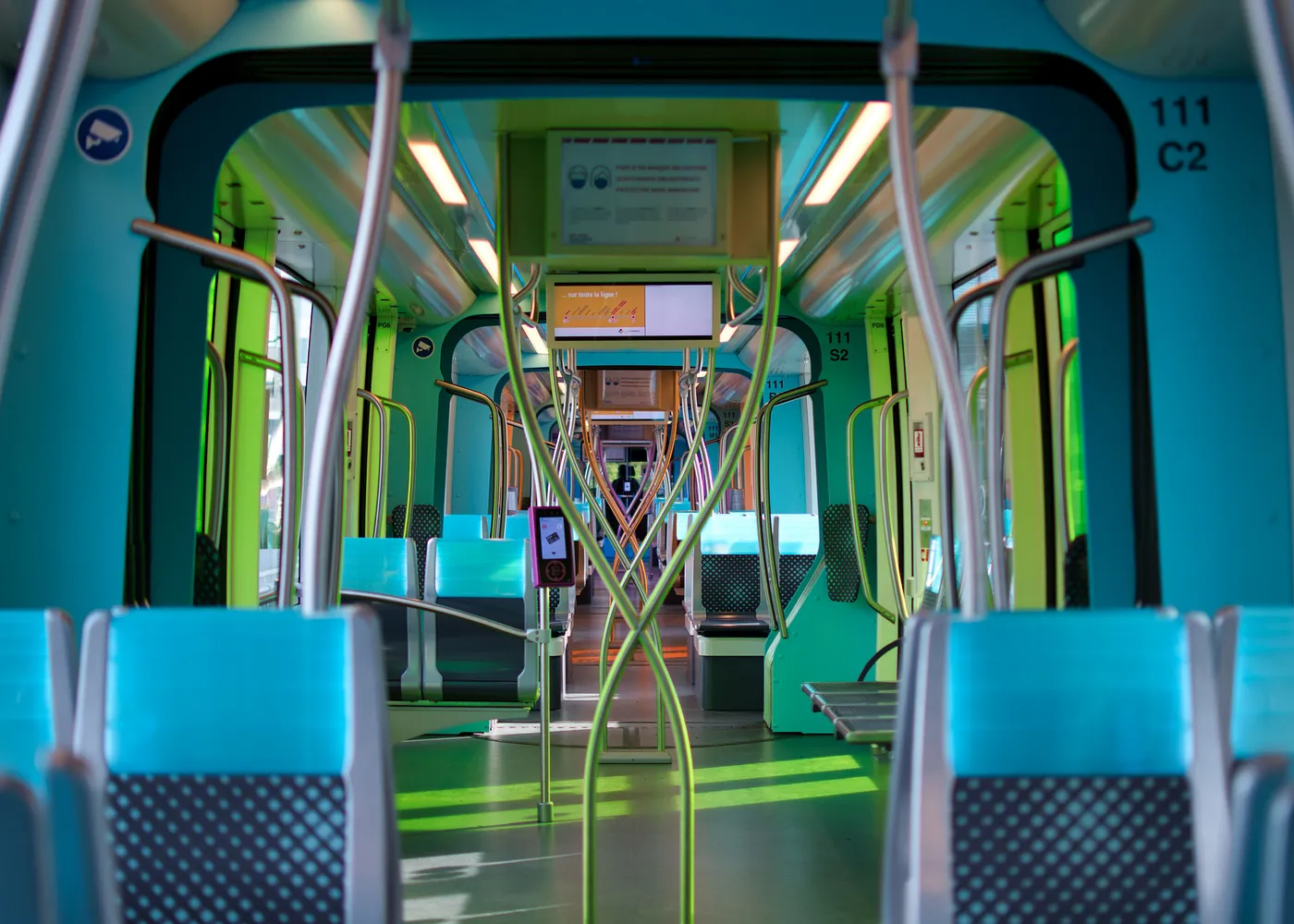Author: Josep Laborda (Factual)
Much ink has been spilled on “Mobility as a Service”, or “MaaS”, in recent years, and much is the ado made on the meaning of newly coined terms such as “ride-hailing”, “ride-sharing”, “ride-pooling” and a long etcetera of nearly endless combinations (try, for instance, coupling the word “car” or “bike”, instead of “ride”, with “sharing”, “pooling”, etc. and you’ll see the “magic” happening, as most of them kind of “work”).
Uber and other TNCs (which, by the way, is one more new acronym standing for “Transportation Network Company”, actually meaning nothing really), they all started as an app pairing riders with private car drivers, and once called themselves a ride-sharing service (because you “shared” the ride with a driver, right? Then, applying the same logic, one might as well call taxis a ride-sharing service, isn’t it?). Uber and other today unicorns in the mobility arena have rapidly evolved into much more complex companies directly operating or facilitating access to a bunch of different transportation services involving different types of vehicles – bikes, mopeds, scooters, you name it – while seeking to find a good win-win fit with public transport, ultimately pursuing a broader, much more ambitious “MaaS vision”, whatever this actually means or aspires to be, given the competitive framework and the technical and legal hurdles that still need to be overcome to realise this vision.

Interestingly, more recent entrants to the burgeoning micromobility market, like Lime, the well-known dockless bike and scooter sharing company, have recently confirmed the rumours to be launching a two-seater electric car-sharing service, showing they have rapidly as well understood the need to go full on multimodal, in this case by adding four-wheeled vehicles to their portfolio with the goal to serve different mobility needs and customer segments (partnership is key – or “promiscuity”, if I may say so! -, and so Lime have as well announced they will co-brand their scooters and integrate them in the Uber app).
Likewise, automotive OEMs are embracing the “MaaS opportunity” by pursuing diverse strategies: some, in a clear attempt to differentiate themselves from their parent company, have created fresh, new startup-like brands devoted to the development of “new mobility services” (sorry for abusing the use of quotation marks, but note this article is about using words rightly); that is the case of VW’s Moia, Seat’s Xmoba, GM’s Maven or Daimler’s Moovel, to name a few. Others, like Ford, keep adding more vehicles to their stock of mobility solutions – with on-demand buses, shared bikes and, more recently, scooters –, but are far less imaginative when it comes to baptising these new mobility services, which are globally managed under a new subsidiary named… Ford Smart Mobility, period.
Recently, General Motors unveiled electric bicycles along with a $10k contest to name them, and earlier, the ubiquitous Elon Musk dropped a bombshell speculating Tesla might make an electric bike, too (I think the Tesla brand fits well with any moving thing: imagine a “Tesla Bike”, a “Tesla Scooter”, a “Tesla Train”, etc. no need for extra creativity here when it comes to naming). The other way round, premium Danish bicycle brand Biomega has revealed their first electric car named “SIN”, oddly enough…
As an author who often strives to find the right word when I write, I somewhat find it a “SIN” indeed to abuse some words until they get void of any meaning they once might have had (not serious with the “SIN” here, by the way, just a timely play on words!). After all, it is only natural that in an extremely crowded mobility market the mentioned players and their competitors struggle to stand out and share the same need to educate customers on what to expect from their new urban mobility services, and probably because of that many of them have fallen into the temptation to attach the “MaaS” label to many of the services they offer (though very few are doing “MaaS” for real). Because…
“MaaS” is undoubtedly a sexy term on everyone’s lips, but the risk is that it will eventually get worn out as previously with the “smart” adjective attached to “city”
(by the way, could anybody tell me what can, or cannot, be considered “smart” in a city?)
Platform companies, such as Uber and AirBnB, have become household brands and changed the way we access, and name, many services. Think of new concepts today widely used not only in transportation related articles, such as the “Uberization” of economy (I personally love the term “Ubernomics”, isn’t it so euphonic?). Now, think of the hundreds of startups branding themselves as the Uber or the AirBnB for “X”, and replace “X” with thousands of things. What if Lyft had popped up before Uber? We might be now using the term “Lyfting” in ways other than for a face-lift!
Ultimately, what many call “new mobility” services, strange as it may seem, often reflect not-so-new mobility concepts that have long existed… What is genuinely “new” is the drivers behind the promotion of these services and the means to access them. Where, for instance, American campaigns during World War IIencouraged patriots to carpool in order to conserve fuel and other supplies for the war effort, nowadays fighting air pollution is the most pressing, widely shared goal; where propaganda posters and word-of-mouth seemed to be an effective way to persuade users to share rides, these days downloading an app to a smartphone does the magic to connect you with other peers sharing similar mobility patterns. You might have probably as well spotted one of these old Autoped e-scootersproving the latest so-called micromobility frenzy is a hundred years old thing…

One last on playing words, how about this:
Mobility as a (Public) Service is, in more unadorned words… voilà, Public Transport!
Back to “MaaS”, I often like to regard it as an “umbrella” or “encapsulating” term that is fairly applicable to a bunch of so-called “new mobility services”, a concept that is almost as versatile as “smart” has been for “smart cities”. Though it does thrill me when I use words pertinently, I think this should rather be for literature (and not always!), and so I tend to be less purist when it comes to using new terms in tech writing. After all, none of these new terms can be found in any dictionary…
Oh, wait! I did find some resources that might come in handy:
- SAE’s Shared Mobility Definitions: https://www.sae.org/shared-mobility
- MaaSLab’s MaaS Dictionary: https://docs.wixstatic.com/ugd/a2135d_d6ffa2fee2834782b4ec9a75c1957f55.pdf




